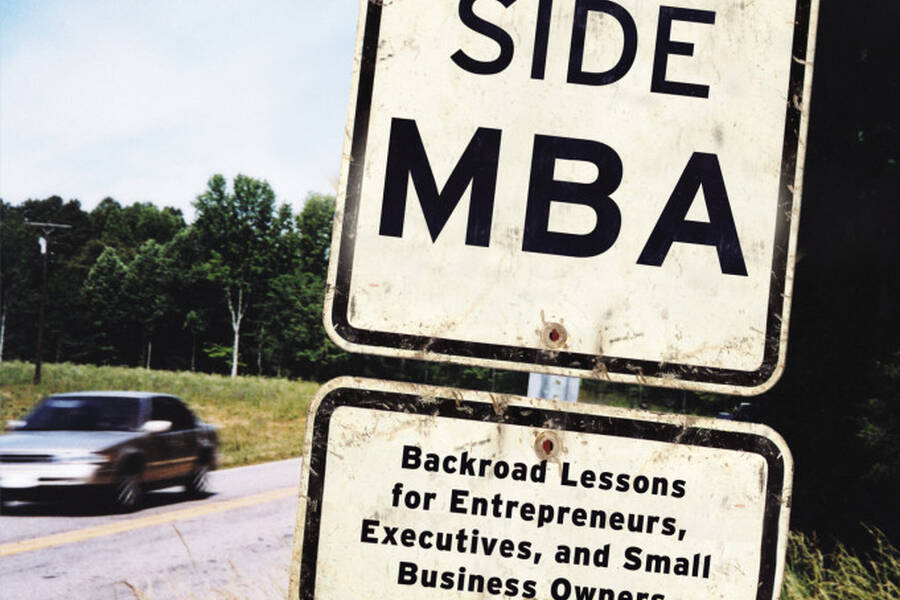Strategy Innovation Jun 2, 2014
Bonus Chapter from Roadside MBA: Profitable Growth in the Heartland
What happens when three economists hit the road in search of strategy insights from small- and medium-sized businesses?
Editor’s Note: “Profitable Growth in the Heartland” is a chapter that was omitted from Roadside MBA, a book that answers the question: What happens when three economists hit the road in search of strategy insights from small- and medium-sized businesses? In the case of Clyde Lear, the Roadside MBA authors gleaned valuable lessons on the importance of economies of scale. Be sure to check out Mike Mazzeo's interview and accompanying podcast in Insight.
 |
It was a very hot Tuesday in Jefferson City, and our second interview of the day was with Clyde Lear, the founder of Learfield Communications. Clyde treated us to a great lunch at the Jefferson City Country Club—thanks, Clyde!—and amidst the tables of ladies-who-lunch and a few early-bird golfers, we got the story of how he built a communications giant with more than 350 employees from scratch.
In the early 1970s, Clyde graduated from the journalism school at the University of Missouri and set out to earn his fortune. He and his partner Derry Brownfield seized an opportunity to provide commodity price information and news about state and federal agricultural policy to farmers. Over the years, Clyde has slowly built the farm-report business, even expanding into areas such as college sports. His story illustrates an impressive solution to a challenge many small businesses face: how to effectively increase the size and profitability of the company.
Over lunch, Clyde discussed the origins of what eventually became the “Brownfield Network” of radio-station affiliates. The first step was signing up radio stations to be a part of the network.
“At the very start,” Clyde recalled, “I visited the station manager of radio station KMMO in Marshall, Missouri. Marshall is the heart of agricultural country, right along I-70. A town of about 8,000 at the time. Look out your window and all you can see is some of the most beautiful farmland in America—raising corn, soy, and a little bit of livestock.
“I asked the station manager, ‘What are you doing in the way of farm programming?’”
“Well, the disk jockey reads the news from the wire machines; that’s what we do.”
“Why do you let the larger stations—the KCMOs out of Kansas City—do all this farm programming and make all this money and you’re not doing anything?” Clyde asked the station manager.
“We don’t have enough money to pay a full-time farm reporter and …”
Clyde cut him off right there.
“I’ll tell you what. I am going to provide you with a full-time farm broadcaster,” said Clyde. “He’ll be on the air all through the morning and again at the noon hour and in the afternoon. And, it’s gonna be live. We’ll do these farm reports on your station and the farmers will begin listening to you, as opposed to listening to these metro stations like KCMO.”
The station manager seemed excited about that prospect, but his first question was (of course), “Well, what’s it going to cost?”
“It’s free. It’s not gonna cost you a thing!”
“It’s free!? Nothing is free!” replied the incredulous station manager.
Clyde went on to explain that the farm reports would not exactly be free—the station manager would “pay” him back by giving him commercial time to sell during these farm-report broadcasts. “I am going to go sell the commercial time—it’s up to me,” he continued. “If I don’t sell it, I don’t make anything.”
A big part of what makes local media—think small radio stations, and hometown newspapers—very attractive to consumers is that it reports on local stories, people, and events. Customers can get information about national news from several different sources, but the only place to get local content is from a local source (“People want to see their friends and family in the paper,” as Jim Thompson, President of the Coeur d’Alene Press in Idaho, put it to us on a later trip). From a business perspective, unfortunately, this focus on local content is very expensive. The cost to produce content per reader is high, and there is often no way to sell it to anyone else, putting a ceiling on what the local newspaper can earn in terms of revenue.
To grow in such an environment, a company would need to figure out a way to inexpensively produce content that is attractive to consumers across a number of geographic locations. Clyde Lear speculated that reporting on agriculture might represent just such an opportunity. In farming communities across the Midwest, there exists a substantial market for topical information specific to the agriculture industry. Farmers are interested in knowing the latest prices in commodity trading markets, as well as the legislation affecting state and federal agricultural policies. But farm communities are served by dozens of independent radio stations dotted across small towns throughout the region. (As a point of reference, there are over 150 individual radio stations in the state of Nebraska alone). Many of these are limited-reach AM stations that exclusively serve just one individual community. Given the limited budgets of these very small stations, it would be very expensive—in most cases, prohibitively so—to employ a dedicated farm reporter. However, by ignoring the needs of their listeners, the local stations were driving them—and potential advertising sales—to the larger competitors in the metro areas.
Clyde recognized that a substantial share of the information in which farmers were interested was common across the various individual communities. Expanding on this idea, he built a network of radio-station affiliates, selling each affiliate a centrally produced farm news report that included a couple dozen short pieces of news per day. Stations were thrilled to receive programming that appealed to their local communities at a fraction of the cost of producing it themselves.
But for Clyde to develop a successful business, advertisers—particularly companies that specialized in manufacturing and selling farm equipment and supplies—would have to sign on to sponsor the network’s programming. Clyde told us the story of his first advertising sales call. Young and naïve, he consulted the “Red Book of Advertising Agencies”—a list of all of the advertising agencies in America and their clients.
“I looked up Pfizer,” Clyde told us, “which was a pretty big account—they had a large agricultural division.” According to the book, Pfizer’s account was handled by Bob Kunkel, an account executive at Leo Burnett, in Chicago. “So, I picked up the phone and I called Bob Kunkel.”
As it turned out, Bob Kunkel was a pretty senior executive at Leo Burnett. He had not one, but two secretaries and an office with an incredible view of Lake Michigan. Bob Kunkel did not typically meet with 20-something salesmen from unknown companies. But, Clyde did manage to get 15 minutes with him. Kunkel was polite and very gracious, and he heard Clyde out on his burgeoning network of affiliates for his farm reports.
“I’ve got these nine radio stations in Northwestern Missouri,” Clyde told Bob Kunkel. “And we’re producing for them a series of farm reports to be broadcast during the day….” As it turned out, Bob Kunkel was impressed by Clyde’s creative new idea. As Clyde reported, “it was about three days later that I got this call from the media department at Leo Burnett. And they said, 'We need your rate card—we need to get your rates. We’ve been told to buy you.'”
“I said, ‘Okey Dokey,’” remembered Clyde, “this is easy!”
Of course, Clyde was just kidding about it being easy—there was plenty of hard work ahead in developing the network to what it is today. But, Clyde was off to a great start. Pfizer wanted to be an advertiser because of the fundamental attractiveness of the farm demographic, and several other similar advertisers followed suit. Bob Kunkel must have realized that radio stations would also find the deal compelling. Indeed, Clyde ended up with more than 350 affiliates in the Brownfield Network.

Clyde’s story illustrates the important concept that economists refer to as “economies of scale.” In this case, additional scale (or quantity) was achieved when the Brownfield Network was expanded by signing up more individual radio stations to “purchase” the farm reports that the company was producing.
Three definitions are critical to understanding economies of scale. The first, “average cost,” is simply the total expenses of a company, divided by the number of units that it produces. Economies of scale exist within a company if average costs go down when quantity goes up.
But total expenses can be split into two categories. Fixed costs typically include things such as the rent, equipment, and business licenses that must be paid no matter how many units a company sells. For the Brownfield Network, fixed costs would have included all the expenses associated with producing a farm report—assembling the information about commodity pricing, hiring reporters to cover government hearings, purchasing the broadcasting equipment, and setting up the production studio.
Variable costs, on the other hand, are those expenses that a company incurs when it wants to produce additional quantity of whatever it is selling. In many firms, inputs are important variable costs—an automobile manufacturer has to purchase four more tires for every car it sells. However, in some firms, variable costs can be quite low. Here, the total costs of providing farm reports to two stations were not much more that the total costs or providing them to one station, because the reporters had already been hired and the equipment had already been purchased.
Thus, if Clyde can sign up more radio stations, revenue increases because he is able to sign up more advertisers like Bob Kunkel when his network of stations is larger. In addition—and importantly—when quantity goes up, average cost goes down! The fixed costs get spread out when more quantity is sold and profits continue to grow.
Artwork by Yevgenia Nayberg.
Mazzeo, Michael, Paul Oyer, and Scott Schaefer. 2014. Roadside MBA: Backroad Lessons for Entrepreneurs, Executives and Small Business Owners. Business Plus.



